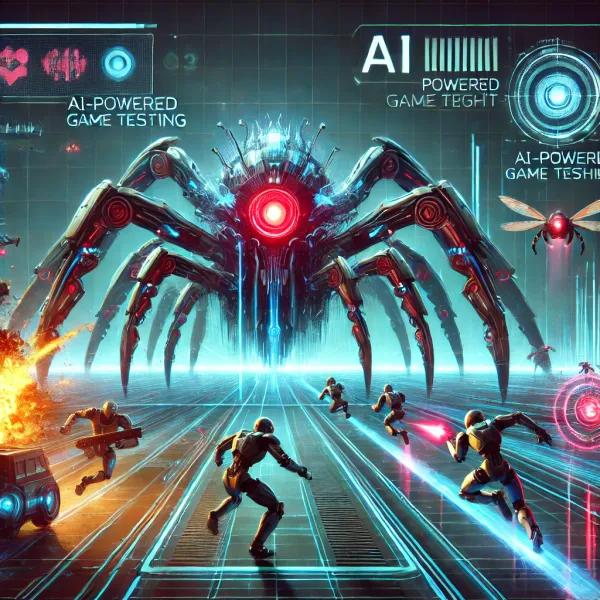AI in game testing: Reducing bugs and improving gameplay experience
Ensuring high-quality, bug-free gameplay has become more critical than ever. AI-powered game testing has emerged as a transformative tool, allowing developers to reduce bugs, enhance user experience, and optimize performance efficiently. This article delves into the ways AI is revolutionizing quality assurance, from automated bug detection to predictive analytics and real-time performance monitoring.
1. Automated bug detection and classification
One of the core advantages of AI in game testing is its ability to automate the bug detection process. AI algorithms can autonomously scan and identify issues that human testers might overlook, enhancing both the accuracy and efficiency of testing. By analyzing game data and code, AI can detect glitches, categorize them by severity, and even suggest solutions. This helps developers allocate resources effectively and prioritize critical issues.
For example, AI tools like Applitools and TestCraft offer automated testing capabilities that ensure extensive coverage and fast execution, significantly reducing the time and effort needed for bug detection (Whimsy Games, TimesTech).
2. Predictive analytics for performance optimization
AI-driven predictive analytics enables developers to forecast potential issues before they affect gameplay. By analyzing historical data from similar games, AI can predict where bugs or performance issues are most likely to occur, guiding developers in preemptively addressing them. This predictive approach to testing not only improves game stability but also enhances the overall gaming experience by ensuring smoother, optimized performance.
For instance, predictive models can highlight areas where gameplay might lag or freeze under specific conditions, allowing developers to optimize resources and ensure consistent performance (Built InTimesTech).
3. Real-Time monitoring and reporting
AI-powered testing tools can perform real-time monitoring of games, providing instant insights and generating reports on gameplay quality, system compatibility, and performance metrics. These tools offer continuous testing and instant feedback, which helps developers identify and resolve issues promptly. For example, advanced AI systems monitor games during stress and load testing to evaluate performance under heavy usage, giving insights into stability across different platforms and devices.
This real-time insight is invaluable for identifying bottlenecks and allows developers to adjust settings or optimize code to maintain smooth gameplay, even under extreme conditions.
4. Dynamic test case generation
Traditionally, test case generation is a time-consuming task that requires manual input. AI, however, can dynamically generate test cases based on game specifications, previous bugs, and player interactions. By automating this process, AI allows for a broader and more comprehensive range of test cases, ensuring that games are tested under various scenarios, including edge cases.
Continuous test case generation enables indie developers to save on resources and time, focusing on creative development while the AI tool performs rigorous testing. This flexibility has been especially beneficial for indie game developers who often operate with limited testing budgets (Built In).
5. Enhancing user experience with UX testing
AI-driven user experience (UX) testing has become integral to ensuring player satisfaction. By analyzing player behavior, natural language processing (NLP) algorithms can identify potential friction points in the game, guiding developers to make gameplay smoother and more intuitive. This approach combines AI-driven insights with human creativity, enabling developers to adjust UI/UX elements for an enhanced user experience that resonates with players.
For example, UX testing allows developers to gauge how players interact with game elements and how long they spend in specific sections, providing valuable data to refine the gameplay.
AI-powered game testing is revolutionizing quality assurance by providing accurate bug detection, predictive analytics, and real-time monitoring. By integrating these tools, developers can enhance game stability, improve user experience, and meet the high standards of today’s gaming market more efficiently. As AI in testing continues to evolve, we can expect more seamless and polished games, offering players an even better experience.




